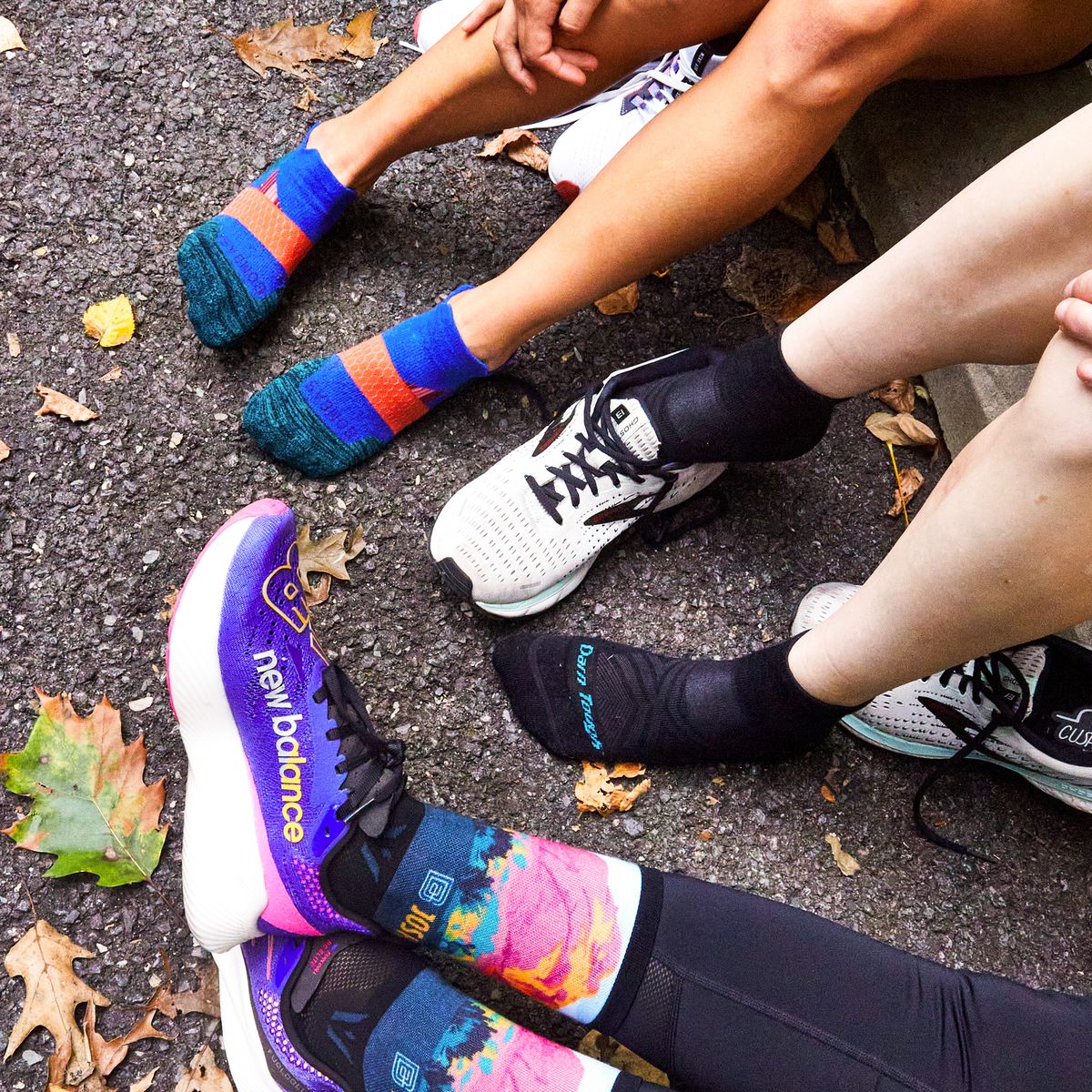If there’s anything runners should do, it’s love and appreciate their feet. After all, we ask a lot of these two relatively small parts of our body. Typically, though, runners only pay attention when they feel pain. And while it’s true that happy feet are silent, often only barking when they need something, all runners can benefit from learning how to take better care of their feet.
“Many runners think running shoes are a magic pill that will make up for poor running mechanics or not warming up before a run, but a better investment is in foot care,” Matthew Barkoff, DPM, a podiatrist in Levittown and Manhattan, New York, tells Runner’s World. “At a minimum, runners should see a podiatrist twice a year, although if they have diabetes that should be upped to four times a year.”
During a typical visit, a podiatrist will check your feet for fungus, warts, and corns, as well as check your toenails for discoloration or brittleness. They will also look for signs of poor circulation and watch you walk to check your gait, which may help with running shoe selection.
More From Runner's World

If you’re one to typically lose toenails during training or get black toenails, a podiatrist can also cut your nails. “I don’t like when pedicurists cut back cuticles,” says Barkoff. “A podiatrist will have sterile equipment which is important if there are ingrown toenails or blood under the nail.” While you won’t leave the appointment with polish on your toes, your health insurance may cover your visit to the doctor—another bonus.
Whether you experience issues with your toes, heels, or general foot pain, or you just want to keep your feet strong through every run, Barkoff answers common questions runners ask about their feet.
Runner’s World: What’s the number-one reason that runners come to see you?
Matthew Barkoff: Runners most often come to see me for plantar fasciitis and heel pain, which are frequently related. Plantar fascia is a string of tissue, like a continuous rope, that connects the heel or the Achilles tendon, to the toes. Every step we take is putting straight pressure on that band, especially when you run on hard surfaces like cement.
In order to avoid issues with the plantar fascia, runners need to warm up and avoid running too fast and too often. Your runs should start with a walk and gentle skipping. You want to get the joints and fascia stretched out. Then, rotate the ankle in both directions. You could even take a light bike ride for a good warmup because that loosens your legs and joints.
Finally, wearing running shoes without adequate arch support can be a causative factor of plantar fasciitis.
RW: What advice do you have about choosing running shoes?
MB: You want to wear what’s comfortable, but also what fits and offers the right amount of support. Too much support can ultimately weaken your feet. You don’t want to run on pillows. You want push-back and some flexibility in your shoe, a little bounce, so that your feet experience proprioception, which is an awareness of your posture and movement.
Also, you want to make sure there is plenty of room in the toe box because as you run, your feet may move forward and they also swell.
You will know your shoes don’t fit properly if your feet feel numb. This may be a sign of “tarsal tunnel syndrome,” a common cause of numbness. This is when you strain the posterior tibial nerve on the inside of the ankle. Proper fitting running shoes and good arch support can help with this issue.
A podiatrist can recommend and help you find the right orthotics, too, for arch support. This is beneficial when it comes to comfort, as well as running mechanics, which ultimately prevents injuries.
The most important thing to know about running shoes is that you should have a couple of pairs of shoes and rotate them amongst your runs. You can get three or four of the same types if you have a favorite and rotate them. It’s not just for your feet. It’s better for the shoe to have time for the material to come back.
Finally, if you walk or run a good amount of mileage, you should replace your shoes every three months. If you’re rotating them, though, you’re extending that period of time because you aren’t running in the same pair every day.
While it’s fine to sometimes walk barefoot, especially in sand or with no rocks or shards, runners should wear shoes.
RW: What about ankle health? Should you see a podiatrist for an ankle injury?
MB: You should absolutely see a podiatrist when you’ve had an ankle injury because an orthopedist can help if it’s a bone injury, but a podiatrist can look at the overall health of your feet and ankles. Strong ankles are key to running well and staying injury-free.
A twisted ankle means you have stretched the ligaments in your ankle past the usual point. It can be painful when it happens, but it feels better quickly. An ankle is sprained when it is twisted, but you have stretched, and possibly even torn, the ligaments. If your ankle is swollen, bruised, and painful after you twist it, it’s probably sprained. Ankle sprains can range from mild to severe, depending on how much damage there is to the ligaments.
If you can’t walk or hear a crack when you get injured, your ankle may be fractured. If your ankle looks deformed or crooked, feels numb, or if you have extreme pain and cannot put any weight on it, then it’s time for an x-ray and a visit to a podiatric surgeon or an orthopedic surgeon.
Runners should strengthen and do mobility exercises for their ankles, including flexing and pointing your foot, circling your ankles, and inverting (picking your feet up off the floor and moving your toes in toward the midline of your body) and everting (picking your feet up off the floor and moving your toes out) your feet. Standing on your toes and dropping your heels off a stair will also strengthen your feet, ankles, and calves.
RW: What do you consider to be the minimal foot care runners should do themselves to prevent issues? How should runners treat their feet?
MB: First, dry the feet well after a shower, and you might even want to use powder after you shower or before you run to prevent blisters. Inspect your feet, especially your toenails, to make sure you don’t have any redness or extensive calluses. Keep your toenails short so that they don’t bang into the insides of your shoes. This will help prevent ingrown toenails.
Wear socks that wick moisture because this can also help prevent blisters.
Finally, but this is in some ways, the most important: Have a strong core! Core exercises have helped my patients with plantar fasciitis, because a strong core stops your feet from having to carry all of your weight. You also need to strengthen your other muscles, such as the hamstrings and calves, to help protect your feet and lessen the impact.
There aren’t many intrinsic muscles in the foot, but doing toe raises, just moving your toe gently up and down is also helpful because runners need range of motion in their big toe joint. That’s your push-off. But again, strengthening the rest of the body is what helps the feet the most.
RW: What about foot massages? Are they helpful? Most people love them.
MB: Oh, I do, too! They are very helpful to your feet. Massages can assist in recovery after a run, mainly by improving blood flow and helping to relax the ligaments and tendons.
You can massage the bottom of the foot on a lacrosse ball or get a plastic bottle and fill it with water. Then put it in the freezer and just roll it under your foot. Also, bend the toes back gently and get your thumbs into the bottom of your foot to get a deep massage. Finally, use two fingers to massage your Achilles tendon.
Donna Raskin has had a long career as a health and fitness writer and editor of books and magazine articles. She bikes in a nearby county park, lifts weights, takes Zumba, and loves to walk/run with her dog, Dolly.












